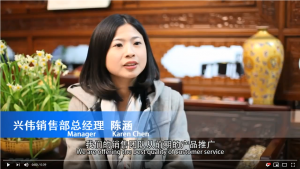How are the reflection effects of the traffic reflective film?
How are the reflection effects of the traffic reflective film? Traffic signs are the main equipment for marking and controlling traffic. Therefore, whether in the day or at night, it can have a great function of reflection. So, with these functions and effects, it meets people’s demand as well as requirements for improving the visibility at night. That is to say, the traffic signs must be changed to meet the standard reflection index, the function of saturation, as well as excellent wide-angle lens properties. How do ordinary people understand the wide-angle properties? When the car headlights shine directly on the signboard from the front, the inclination angle (the angle between the incident light and the normal of the sign surface) is not large. But when turning or at a multi-channel intersection, the inclination angle is relatively large under special conditions. If the inclination angle changes from small to large, and the retroreflective coefficient value is not greatly affected, this type of highway traffic reflective film has a good wide-angle lens performance. So, people have a great choice of the retro-reflective materials to shine under the headlights of vehicles, which account for the diffraction properties of light, forming the highlight of the inner part, while the outer part is dim due to the difference in reflection lines. Therefore, when the logo is at a certain distance from the car, different car models have different observation angles, resulting in individual differences in their visual recognition. According to many scientific studies, the visual distance of signs at different speeds and relative heights is about 150m to 50m. The observation angle of a standard car is 0.2°~0.9°, and the observation angle of a large truck is 0.5°~2.0°. That is to say, the observation angle of a large truck is more than twice that of a car. The driver's line of sight of a large truck is close to the reflective field and has higher requirements for the reflective performance. What are the standards and the rules of traffic reflective sheeting? According to the reasons mentioned above, different grades of the engineering traffic reflective film have various criteria. In particular, it is clearly proposed that Class V (wide-angle) reflective film should be used for signs on small-radius curve sections of expressways, small-radius ramps of overpasses, intersections with complex traffic, and large viewing angles (such as restrictions and signs that require drivers to observe horizontally at a wide angle. And roads are dominated by large vehicles with the purpose of improving their wide-angle retroreflective performance and visibility, especially for signs directly related to safety.In addition, according to the test results of the above principle, when the signs are located on the road surface, such as gantry and cantilever, we sincerely adopt the same grade of super-strong road traffic reflective film material as the roadside, which accounts for their retroreflective effect can dramatically reach about 15% of the roadside. In those cases, the retroreflective performance of the sign plate located on the motorway should be one [...]
